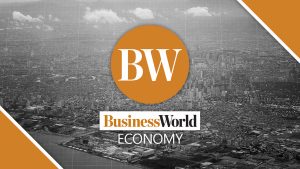IN BRIEF:
• Retailers and CPG companies are investing in technology and innovation to stay relevant and meet evolving consumer demands.
• The evolving relationship between retailers and CPG companies requires a focus on collaboration to address changing consumer behaviors.
• Companies that prioritize consumer needs and expectations will be best positioned to thrive in the future.
The relationship between consumer packaged goods (CPG) companies, retailers, and consumers has undergone significant changes over the past five years. Disruption and innovation have forced CPG and retail companies to rethink their businesses, while consumers have reevaluated how they shop and what they need. The evolving relationship between CPG companies and retailers presents an opportunity for a more radical rethink of how they both go to market and measure success.
CPG companies, which create merchandise that customers frequently use such as food, beverages, cosmetics, and cleaning products, and retail companies, have both invested in new technologies, channels, and consumer touchpoints to stay relevant.
However, their roles have overlapped, leading to tension and increased competition for attention as the traditional model no longer remains linear. CPG companies make products, but they now also deliver and sell them directly to consumers, while retailers sell and deliver products to consumers while also making them. Consumers buy products, but they often personalize and co-create them with CPG companies. Additionally, with consumers focusing more on value and price, they’re showing less interest in brands (apart from luxury goods) and are instead more interested in what retailers themselves have to offer.
Consumers, who ultimately hold the power in this dynamic, are more informed and demanding than ever. Companies that can deliver on consumer needs and expectations will be in the strongest position to reset the relationship.
This article explores how retailers and CPG companies can strengthen their partnership to overcome disruption, better serve consumers, and thrive in a rapidly evolving market.
RETAILERS GAINING CONFIDENCE AND MORE CONTROL
Retailers, especially in the grocery sector, have become more empowered and confident. The pandemic accelerated their technology adoption, enabling contactless payments, self-service checkouts, and delivery services. These innovations have driven convenience and cost efficiencies, allowing retailers to exert more control over what they sell and focus on delivering value. Additionally, many retailers have taken on broader roles as community hubs and defenders of consumer interests, pushing back against price increases from CPG companies.
EMBRACING DIRECT CONSUMER ENGAGEMENT
As consumer engagement becomes more highly prioritized, CPG companies are using technology to build direct connections with consumers through direct-to-consumer (D2C) business models, subscription services, and social selling. According to the EY Future Consumer Index, influencers are on the rise, with 45% of consumers sharing that they follow social media influencers. As much as 74% say they find influencer product recommendations trustworthy, and 61% share that they purchased a product based solely on an influencer’s recommendation.
CPG companies have also focused on making supply chains more flexible and responsive, reducing costs and being more sustainable. By exploring new physical channels and adapting to the growing power of larger retailers, CPG companies aim to maintain production and execute growth strategies to gain higher sales volumes.
CONSUMERS DRIVING CHANGE WITH NEW BEHAVIORS
Consumers are shopping differently, with increased price sensitivity and a preference for online shopping, home delivery, and buying from thrift stores. Due to being online more often, they are more informed about product ingredients, company practices, and the environmental impact of the companies they shop from.
According to the EY Future Consumer Index, consumers are turning away from once-favored brands as their priorities and options change. As much as 74% have mentioned awareness of shrinkflation in the form of branded products now coming in smaller pack sizes, while 50% would make the switch to a new product if it provided better quality. Consumers are also more willing to try private labels, with 41% having switched already. Brands were not considered an important factor in 48% of purchase decisions, putting CPG companies at a disadvantage.
This shift in consumer behavior is reshaping the relationship between retailers and CPG companies.
OPPORTUNITIES FOR COLLABORATION
As the relationships between CPG companies, retailers, and consumers have changed due to ongoing disruption and evolving needs, success now depends on fostering open, collaborative, and agile ways of thinking and working. By leveraging each other’s strengths and innovations, retailers and CPG companies can approach the future from a position of strength.
Creating seamless multi-channel experiences. Retailers and CPG companies must prioritize operating without friction across multiple channels to meet consumer demands. For example, some companies offer a “Buy Online, Pick Up In Store” (BOPIS) model and use mobile apps that allow customers to shop seamlessly across channels. By investing in marketing and innovation, they can create compelling offers for consumers wherever they are. Collaboration between retailers and CPG companies can help address common challenges and leverage each other’s strengths for mutual benefit.
BALANCING VALUE AND VOLUME
As consumers become more price-sensitive, retailers focus on delivering value, while CPG companies aim to drive volume. Both parties have a shared interest in striking the right balance between value and volume. Artificial intelligence or AI-led solutions, such as revenue growth management, can help customize and fine-tune portfolio, pricing, and promotions to achieve this balance. For example, a global food and beverage company uses artificial intelligence (AI) to enhance inventory prediction, utilizing analytics-driven software platforms to minimize inventory levels and costs while improving the accuracy of demand forecasting and streamlining supply chain workflows.
INNOVATING WITH DATA INSIGHTS
Retailers and CPG companies have vast amounts of consumer data but often lack a comprehensive view of future consumer behavior. By sharing insights and working together, they can gain a stronger understanding of consumer purchasing behaviors and create better-targeted campaigns. This collaboration can lead to more effective trade promotions and profitable business strategies. The use of CRM tools in particular can better stratify, assess, and create targeted promotional content for customers.
TURNING FRICTION POINTS INTO VALUE DRIVERS
The shopping experience has many points of friction, such as in apparel — customers expect the option to return unwanted goods at no cost to them and often engage in bracketing, which is defined as buying items in multiple sizes and sending back what doesn’t fit. To address this, retailers and CPG companies can use AI to help consumers make better buying choices and deliver a better shopping experience. The EY Index shows 59% of consumers trust AI-generated imagery to show them what a product would look like on them, 56% positively engage with AI to answer questions about an item, and 50% trust AI to take size measurements via their phone camera, as demonstrated by a Japanese clothing brand. Some companies also accept bracketing within defined limits, and offer faster or free returns to customers who meet a minimum actual spend or who are members of their loyalty programs.
LEVERAGING AI FOR GROWTH AND EFFICIENCY
AI offers endless opportunities to turn friction points into value drivers. Retailers and CPG companies can use AI to anticipate future consumer needs, reassess relationships, and drive growth and margin improvement. For example, a multinational CPG company uses an AI model that integrates forecasts and actual sales data between the company and its customers, linking consumer purchases directly to the source of materials. This approach eliminates traditional supply chain barriers and enhances data visibility, creating a cohesive ecosystem that connects different supply chains and optimizes inventory at distribution centers and stores. As AI becomes an essential part of the CPG and retail relationship, companies must align their strategies to maximize its potential.
FOSTERING A COLLABORATIVE MINDSET
Traditionally, CPG companies, retailers and consumers used to be a simple linear chain: CPG companies manufactured branded products, retailers sold them in their stores, and consumers bought them off shelves.
By focusing on collaboration, consumer-centricity, and innovation, retailers and CPG companies can strengthen their partnership and thrive.
This article is for general information only and is not a substitute for professional advice where the facts and circumstances warrant. The views and opinions expressed above are those of the author and do not necessarily represent the views of SGV & Co.
Maria Kathrina S. Macaisa-Peña is a business consulting partner and the consumer products and retail sector leader of SGV & Co.

